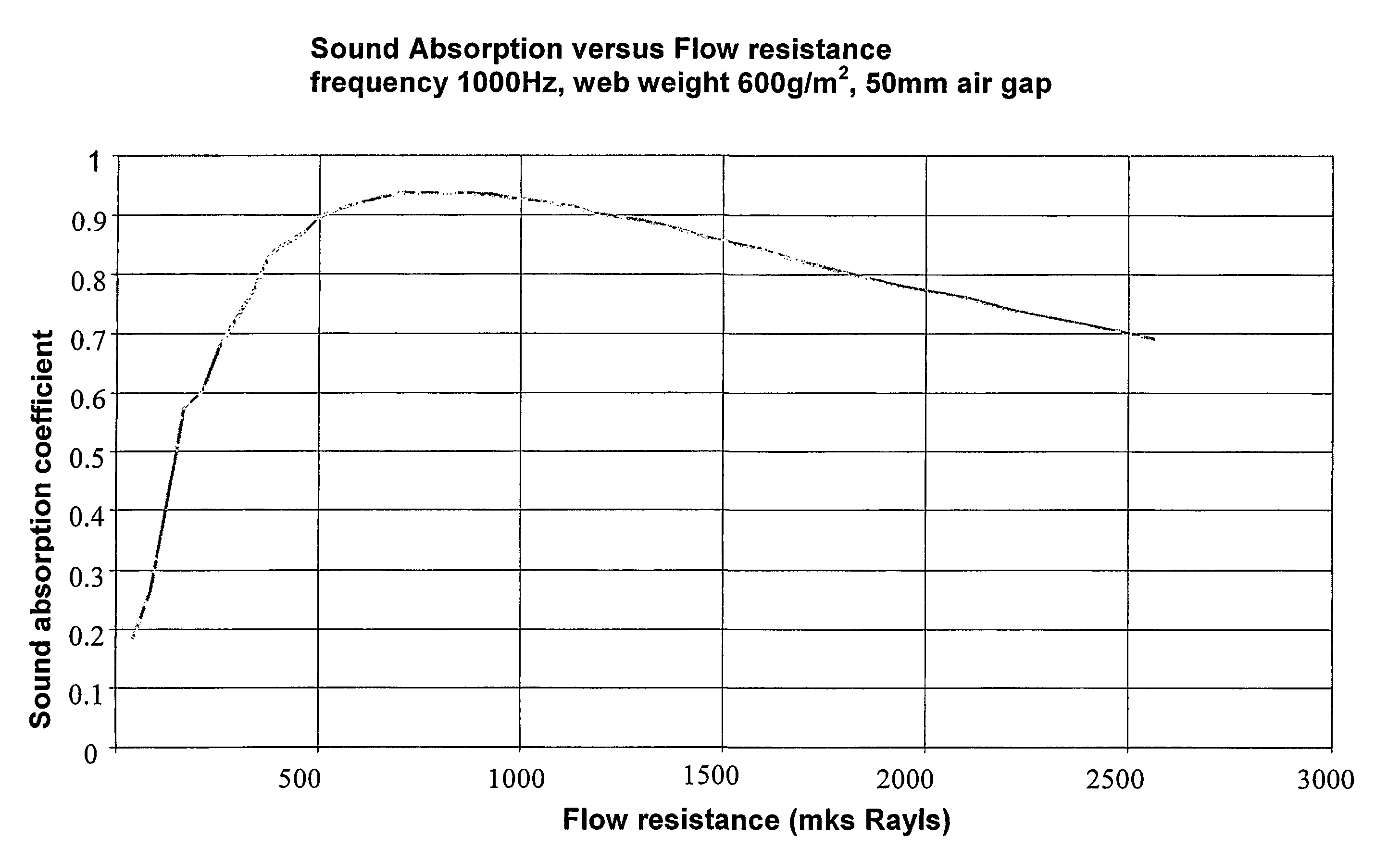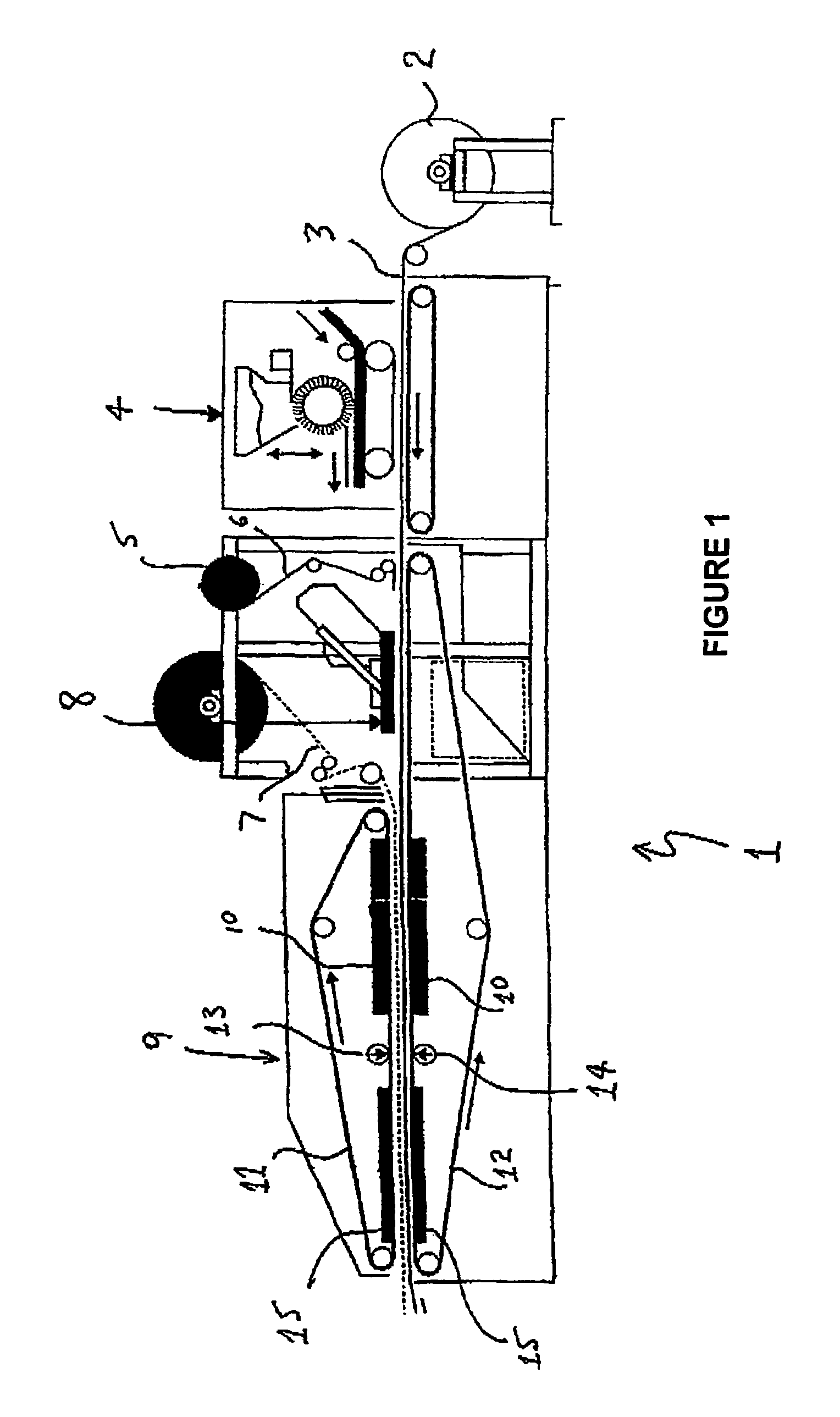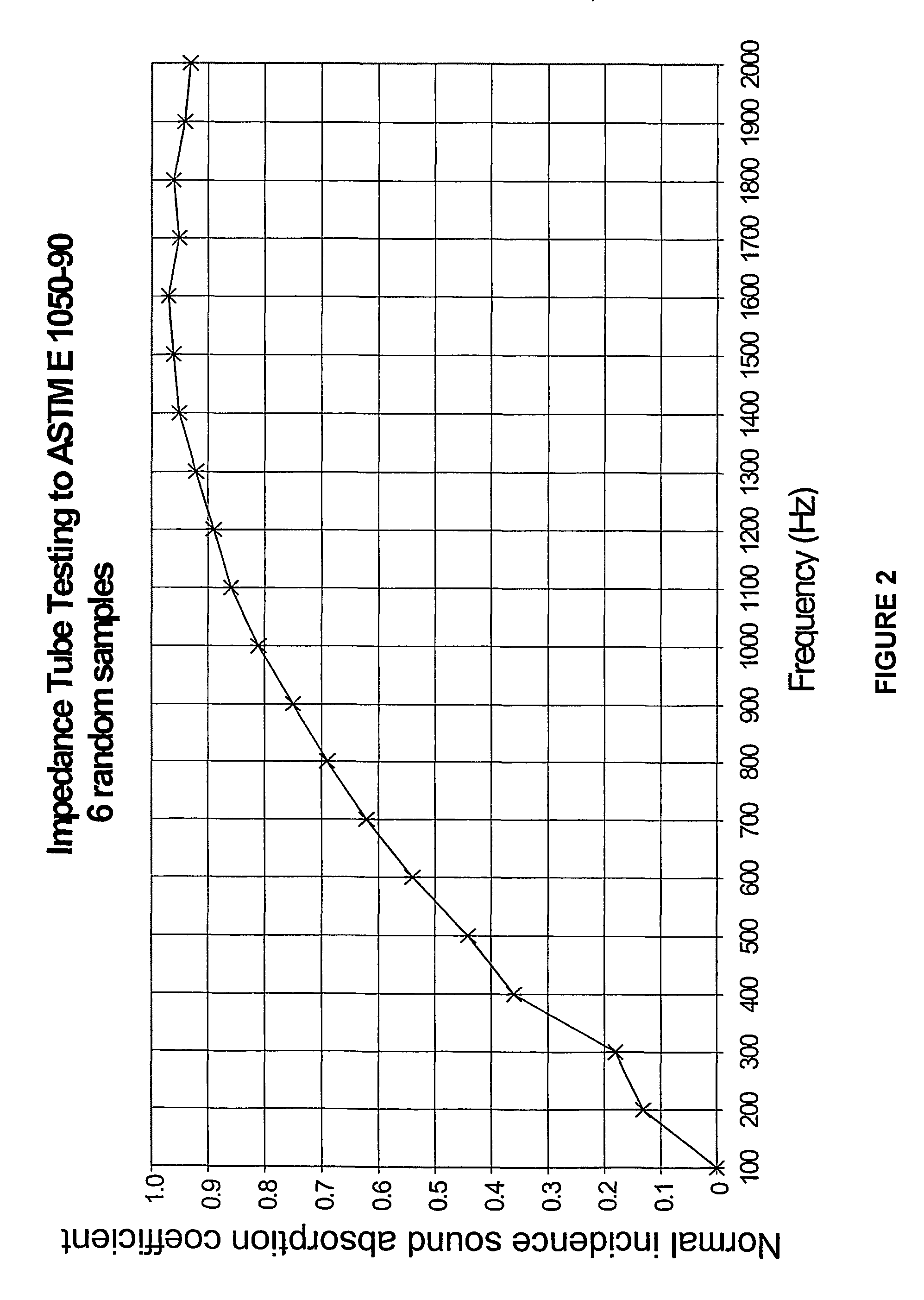Thermoformable acoustic sheet
- Summary
- Abstract
- Description
- Claims
- Application Information
AI Technical Summary
Benefits of technology
Problems solved by technology
Method used
Image
Examples
example 1
[0047]A sample was prepared using the above described machine and tested using an impedance tube with a 50 mm air gap to ASTME E 1050-90. The properties of the sample were:[0048]carrier formulation 30% polypropylene (adhesive fibre) and 70% polyester (high melt);[0049]web material was a needle punched mixture in roll form;[0050]carrier web weight 450 g / m2; and[0051]polyester non-woven fabric facing web weight 50 g / m2 adhered with a small (15–20 g) of polypropylene powder.
[0052]The average air flow resistance of the sample was 300–400 mks Rayls.
[0053]FIG. 2 is a plot of average incident sound absorption versus frequency for six randomly selected samples prepared according to this example.
example 2
[0054]A sample was prepared and tested in the same manner as in Example 1 with the following specifications:[0055]50% high melt fibre of 6 denier;[0056]50% adhesive fibre of 4 denier; and[0057]web weight 700 g / m2.
[0058]The air flow resistance of the sample was in the range of 300–400 mks Rayls.
example 3
[0059]A sample was prepared and tested in the same manner as in Example 1 with the following specifications:[0060]30% high melt polyester fibre of 6 denier;[0061]70% adhesive polyester fibre of 4 denier;[0062]web weight 600 g / m2.
[0063]The air flow resistance of the sample was in the range of 700–850 mks Rayls.
PUM
| Property | Measurement | Unit |
|---|---|---|
| Temperature | aaaaa | aaaaa |
| Temperature | aaaaa | aaaaa |
| Fraction | aaaaa | aaaaa |
Abstract
Description
Claims
Application Information
 Login to View More
Login to View More - R&D
- Intellectual Property
- Life Sciences
- Materials
- Tech Scout
- Unparalleled Data Quality
- Higher Quality Content
- 60% Fewer Hallucinations
Browse by: Latest US Patents, China's latest patents, Technical Efficacy Thesaurus, Application Domain, Technology Topic, Popular Technical Reports.
© 2025 PatSnap. All rights reserved.Legal|Privacy policy|Modern Slavery Act Transparency Statement|Sitemap|About US| Contact US: help@patsnap.com



